Embryonic Stem Cells
Adult Stem Cells
Induced Pluripotent Stem Cells
Therapeutic Use
Research and Development
Regenerative Medicine
Cell Expansion
Cell Differentiation
Cell Preservation
Pharmaceutical Companies
Academic and Research Institutions
Contract Manufacturing Organizations
North America
Europe
South America
Asia Pacific
Middle East and Africa
North America Outlook (USD Billion, 2019-2035)
North America Stem Cell Manufacturing Market by Cell Type
Embryonic Stem Cells
Adult Stem Cells
Induced Pluripotent Stem Cells
North America Stem Cell Manufacturing Market by Application Type
Therapeutic Use
Research and Development
Regenerative Medicine
North America Stem Cell Manufacturing Market by Production Method Type
Cell Expansion
Cell Differentiation
Cell Preservation
North America Stem Cell Manufacturing Market by End User Type
Pharmaceutical Companies
Academic and Research Institutions
Contract Manufacturing Organizations
North America Stem Cell Manufacturing Market by Regional Type
US
Canada
US Outlook (USD Billion, 2019-2035)
US Stem Cell Manufacturing Market by Cell Type
Embryonic Stem Cells
Adult Stem Cells
Induced Pluripotent Stem Cells
US Stem Cell Manufacturing Market by Application Type
Therapeutic Use
Research and Development
Regenerative Medicine
US Stem Cell Manufacturing Market by Production Method Type
Cell Expansion
Cell Differentiation
Cell Preservation
US Stem Cell Manufacturing Market by End User Type
Pharmaceutical Companies
Academic and Research Institutions
Contract Manufacturing Organizations
CANADA Outlook (USD Billion, 2019-2035)
CANADA Stem Cell Manufacturing Market by Cell Type
Embryonic Stem Cells
Adult Stem Cells
Induced Pluripotent Stem Cells
CANADA Stem Cell Manufacturing Market by Application Type
Therapeutic Use
Research and Development
Regenerative Medicine
CANADA Stem Cell Manufacturing Market by Production Method Type
Cell Expansion
Cell Differentiation
Cell Preservation
CANADA Stem Cell Manufacturing Market by End User Type
Pharmaceutical Companies
Academic and Research Institutions
Contract Manufacturing Organizations
Europe Outlook (USD Billion, 2019-2035)
Europe Stem Cell Manufacturing Market by Cell Type
Embryonic Stem Cells
Adult Stem Cells
Induced Pluripotent Stem Cells
Europe Stem Cell Manufacturing Market by Application Type
Therapeutic Use
Research and Development
Regenerative Medicine
Europe Stem Cell Manufacturing Market by Production Method Type
Cell Expansion
Cell Differentiation
Cell Preservation
Europe Stem Cell Manufacturing Market by End User Type
Pharmaceutical Companies
Academic and Research Institutions
Contract Manufacturing Organizations
Europe Stem Cell Manufacturing Market by Regional Type
Germany
UK
France
Russia
Italy
Spain
Rest of Europe
GERMANY Outlook (USD Billion, 2019-2035)
GERMANY Stem Cell Manufacturing Market by Cell Type
Embryonic Stem Cells
Adult Stem Cells
Induced Pluripotent Stem Cells
GERMANY Stem Cell Manufacturing Market by Application Type
Therapeutic Use
Research and Development
Regenerative Medicine
GERMANY Stem Cell Manufacturing Market by Production Method Type
Cell Expansion
Cell Differentiation
Cell Preservation
GERMANY Stem Cell Manufacturing Market by End User Type
Pharmaceutical Companies
Academic and Research Institutions
Contract Manufacturing Organizations
UK Outlook (USD Billion, 2019-2035)
UK Stem Cell Manufacturing Market by Cell Type
Embryonic Stem Cells
Adult Stem Cells
Induced Pluripotent Stem Cells
UK Stem Cell Manufacturing Market by Application Type
Therapeutic Use
Research and Development
Regenerative Medicine
UK Stem Cell Manufacturing Market by Production Method Type
Cell Expansion
Cell Differentiation
Cell Preservation
UK Stem Cell Manufacturing Market by End User Type
Pharmaceutical Companies
Academic and Research Institutions
Contract Manufacturing Organizations
FRANCE Outlook (USD Billion, 2019-2035)
FRANCE Stem Cell Manufacturing Market by Cell Type
Embryonic Stem Cells
Adult Stem Cells
Induced Pluripotent Stem Cells
FRANCE Stem Cell Manufacturing Market by Application Type
Therapeutic Use
Research and Development
Regenerative Medicine
FRANCE Stem Cell Manufacturing Market by Production Method Type
Cell Expansion
Cell Differentiation
Cell Preservation
FRANCE Stem Cell Manufacturing Market by End User Type
Pharmaceutical Companies
Academic and Research Institutions
Contract Manufacturing Organizations
RUSSIA Outlook (USD Billion, 2019-2035)
RUSSIA Stem Cell Manufacturing Market by Cell Type
Embryonic Stem Cells
Adult Stem Cells
Induced Pluripotent Stem Cells
RUSSIA Stem Cell Manufacturing Market by Application Type
Therapeutic Use
Research and Development
Regenerative Medicine
RUSSIA Stem Cell Manufacturing Market by Production Method Type
Cell Expansion
Cell Differentiation
Cell Preservation
RUSSIA Stem Cell Manufacturing Market by End User Type
Pharmaceutical Companies
Academic and Research Institutions
Contract Manufacturing Organizations
ITALY Outlook (USD Billion, 2019-2035)
ITALY Stem Cell Manufacturing Market by Cell Type
Embryonic Stem Cells
Adult Stem Cells
Induced Pluripotent Stem Cells
ITALY Stem Cell Manufacturing Market by Application Type
Therapeutic Use
Research and Development
Regenerative Medicine
ITALY Stem Cell Manufacturing Market by Production Method Type
Cell Expansion
Cell Differentiation
Cell Preservation
ITALY Stem Cell Manufacturing Market by End User Type
Pharmaceutical Companies
Academic and Research Institutions
Contract Manufacturing Organizations
SPAIN Outlook (USD Billion, 2019-2035)
SPAIN Stem Cell Manufacturing Market by Cell Type
Embryonic Stem Cells
Adult Stem Cells
Induced Pluripotent Stem Cells
SPAIN Stem Cell Manufacturing Market by Application Type
Therapeutic Use
Research and Development
Regenerative Medicine
SPAIN Stem Cell Manufacturing Market by Production Method Type
Cell Expansion
Cell Differentiation
Cell Preservation
SPAIN Stem Cell Manufacturing Market by End User Type
Pharmaceutical Companies
Academic and Research Institutions
Contract Manufacturing Organizations
REST OF EUROPE Outlook (USD Billion, 2019-2035)
REST OF EUROPE Stem Cell Manufacturing Market by Cell Type
Embryonic Stem Cells
Adult Stem Cells
Induced Pluripotent Stem Cells
REST OF EUROPE Stem Cell Manufacturing Market by Application Type
Therapeutic Use
Research and Development
Regenerative Medicine
REST OF EUROPE Stem Cell Manufacturing Market by Production Method Type
Cell Expansion
Cell Differentiation
Cell Preservation
REST OF EUROPE Stem Cell Manufacturing Market by End User Type
Pharmaceutical Companies
Academic and Research Institutions
Contract Manufacturing Organizations
APAC Outlook (USD Billion, 2019-2035)
APAC Stem Cell Manufacturing Market by Cell Type
Embryonic Stem Cells
Adult Stem Cells
Induced Pluripotent Stem Cells
APAC Stem Cell Manufacturing Market by Application Type
Therapeutic Use
Research and Development
Regenerative Medicine
APAC Stem Cell Manufacturing Market by Production Method Type
Cell Expansion
Cell Differentiation
Cell Preservation
APAC Stem Cell Manufacturing Market by End User Type
Pharmaceutical Companies
Academic and Research Institutions
Contract Manufacturing Organizations
APAC Stem Cell Manufacturing Market by Regional Type
China
India
Japan
South Korea
Malaysia
Thailand
Indonesia
Rest of APAC
CHINA Outlook (USD Billion, 2019-2035)
CHINA Stem Cell Manufacturing Market by Cell Type
Embryonic Stem Cells
Adult Stem Cells
Induced Pluripotent Stem Cells
CHINA Stem Cell Manufacturing Market by Application Type
Therapeutic Use
Research and Development
Regenerative Medicine
CHINA Stem Cell Manufacturing Market by Production Method Type
Cell Expansion
Cell Differentiation
Cell Preservation
CHINA Stem Cell Manufacturing Market by End User Type
Pharmaceutical Companies
Academic and Research Institutions
Contract Manufacturing Organizations
INDIA Outlook (USD Billion, 2019-2035)
INDIA Stem Cell Manufacturing Market by Cell Type
Embryonic Stem Cells
Adult Stem Cells
Induced Pluripotent Stem Cells
INDIA Stem Cell Manufacturing Market by Application Type
Therapeutic Use
Research and Development
Regenerative Medicine
INDIA Stem Cell Manufacturing Market by Production Method Type
Cell Expansion
Cell Differentiation
Cell Preservation
INDIA Stem Cell Manufacturing Market by End User Type
Pharmaceutical Companies
Academic and Research Institutions
Contract Manufacturing Organizations
JAPAN Outlook (USD Billion, 2019-2035)
JAPAN Stem Cell Manufacturing Market by Cell Type
Embryonic Stem Cells
Adult Stem Cells
Induced Pluripotent Stem Cells
JAPAN Stem Cell Manufacturing Market by Application Type
Therapeutic Use
Research and Development
Regenerative Medicine
JAPAN Stem Cell Manufacturing Market by Production Method Type
Cell Expansion
Cell Differentiation
Cell Preservation
JAPAN Stem Cell Manufacturing Market by End User Type
Pharmaceutical Companies
Academic and Research Institutions
Contract Manufacturing Organizations
SOUTH KOREA Outlook (USD Billion, 2019-2035)
SOUTH KOREA Stem Cell Manufacturing Market by Cell Type
Embryonic Stem Cells
Adult Stem Cells
Induced Pluripotent Stem Cells
SOUTH KOREA Stem Cell Manufacturing Market by Application Type
Therapeutic Use
Research and Development
Regenerative Medicine
SOUTH KOREA Stem Cell Manufacturing Market by Production Method Type
Cell Expansion
Cell Differentiation
Cell Preservation
SOUTH KOREA Stem Cell Manufacturing Market by End User Type
Pharmaceutical Companies
Academic and Research Institutions
Contract Manufacturing Organizations
MALAYSIA Outlook (USD Billion, 2019-2035)
MALAYSIA Stem Cell Manufacturing Market by Cell Type
Embryonic Stem Cells
Adult Stem Cells
Induced Pluripotent Stem Cells
MALAYSIA Stem Cell Manufacturing Market by Application Type
Therapeutic Use
Research and Development
Regenerative Medicine
MALAYSIA Stem Cell Manufacturing Market by Production Method Type
Cell Expansion
Cell Differentiation
Cell Preservation
MALAYSIA Stem Cell Manufacturing Market by End User Type
Pharmaceutical Companies
Academic and Research Institutions
Contract Manufacturing Organizations
THAILAND Outlook (USD Billion, 2019-2035)
THAILAND Stem Cell Manufacturing Market by Cell Type
Embryonic Stem Cells
Adult Stem Cells
Induced Pluripotent Stem Cells
THAILAND Stem Cell Manufacturing Market by Application Type
Therapeutic Use
Research and Development
Regenerative Medicine
THAILAND Stem Cell Manufacturing Market by Production Method Type
Cell Expansion
Cell Differentiation
Cell Preservation
THAILAND Stem Cell Manufacturing Market by End User Type
Pharmaceutical Companies
Academic and Research Institutions
Contract Manufacturing Organizations
INDONESIA Outlook (USD Billion, 2019-2035)
INDONESIA Stem Cell Manufacturing Market by Cell Type
Embryonic Stem Cells
Adult Stem Cells
Induced Pluripotent Stem Cells
INDONESIA Stem Cell Manufacturing Market by Application Type
Therapeutic Use
Research and Development
Regenerative Medicine
INDONESIA Stem Cell Manufacturing Market by Production Method Type
Cell Expansion
Cell Differentiation
Cell Preservation
INDONESIA Stem Cell Manufacturing Market by End User Type
Pharmaceutical Companies
Academic and Research Institutions
Contract Manufacturing Organizations
REST OF APAC Outlook (USD Billion, 2019-2035)
REST OF APAC Stem Cell Manufacturing Market by Cell Type
Embryonic Stem Cells
Adult Stem Cells
Induced Pluripotent Stem Cells
REST OF APAC Stem Cell Manufacturing Market by Application Type
Therapeutic Use
Research and Development
Regenerative Medicine
REST OF APAC Stem Cell Manufacturing Market by Production Method Type
Cell Expansion
Cell Differentiation
Cell Preservation
REST OF APAC Stem Cell Manufacturing Market by End User Type
Pharmaceutical Companies
Academic and Research Institutions
Contract Manufacturing Organizations
South America Outlook (USD Billion, 2019-2035)
South America Stem Cell Manufacturing Market by Cell Type
Embryonic Stem Cells
Adult Stem Cells
Induced Pluripotent Stem Cells
South America Stem Cell Manufacturing Market by Application Type
Therapeutic Use
Research and Development
Regenerative Medicine
South America Stem Cell Manufacturing Market by Production Method Type
Cell Expansion
Cell Differentiation
Cell Preservation
South America Stem Cell Manufacturing Market by End User Type
Pharmaceutical Companies
Academic and Research Institutions
Contract Manufacturing Organizations
South America Stem Cell Manufacturing Market by Regional Type
Brazil
Mexico
Argentina
Rest of South America
BRAZIL Outlook (USD Billion, 2019-2035)
BRAZIL Stem Cell Manufacturing Market by Cell Type
Embryonic Stem Cells
Adult Stem Cells
Induced Pluripotent Stem Cells
BRAZIL Stem Cell Manufacturing Market by Application Type
Therapeutic Use
Research and Development
Regenerative Medicine
BRAZIL Stem Cell Manufacturing Market by Production Method Type
Cell Expansion
Cell Differentiation
Cell Preservation
BRAZIL Stem Cell Manufacturing Market by End User Type
Pharmaceutical Companies
Academic and Research Institutions
Contract Manufacturing Organizations
MEXICO Outlook (USD Billion, 2019-2035)
MEXICO Stem Cell Manufacturing Market by Cell Type
Embryonic Stem Cells
Adult Stem Cells
Induced Pluripotent Stem Cells
MEXICO Stem Cell Manufacturing Market by Application Type
Therapeutic Use
Research and Development
Regenerative Medicine
MEXICO Stem Cell Manufacturing Market by Production Method Type
Cell Expansion
Cell Differentiation
Cell Preservation
MEXICO Stem Cell Manufacturing Market by End User Type
Pharmaceutical Companies
Academic and Research Institutions
Contract Manufacturing Organizations
ARGENTINA Outlook (USD Billion, 2019-2035)
ARGENTINA Stem Cell Manufacturing Market by Cell Type
Embryonic Stem Cells
Adult Stem Cells
Induced Pluripotent Stem Cells
ARGENTINA Stem Cell Manufacturing Market by Application Type
Therapeutic Use
Research and Development
Regenerative Medicine
ARGENTINA Stem Cell Manufacturing Market by Production Method Type
Cell Expansion
Cell Differentiation
Cell Preservation
ARGENTINA Stem Cell Manufacturing Market by End User Type
Pharmaceutical Companies
Academic and Research Institutions
Contract Manufacturing Organizations
REST OF SOUTH AMERICA Outlook (USD Billion, 2019-2035)
REST OF SOUTH AMERICA Stem Cell Manufacturing Market by Cell Type
Embryonic Stem Cells
Adult Stem Cells
Induced Pluripotent Stem Cells
REST OF SOUTH AMERICA Stem Cell Manufacturing Market by Application Type
Therapeutic Use
Research and Development
Regenerative Medicine
REST OF SOUTH AMERICA Stem Cell Manufacturing Market by Production Method Type
Cell Expansion
Cell Differentiation
Cell Preservation
REST OF SOUTH AMERICA Stem Cell Manufacturing Market by End User Type
Pharmaceutical Companies
Academic and Research Institutions
Contract Manufacturing Organizations
MEA Outlook (USD Billion, 2019-2035)
MEA Stem Cell Manufacturing Market by Cell Type
Embryonic Stem Cells
Adult Stem Cells
Induced Pluripotent Stem Cells
MEA Stem Cell Manufacturing Market by Application Type
Therapeutic Use
Research and Development
Regenerative Medicine
MEA Stem Cell Manufacturing Market by Production Method Type
Cell Expansion
Cell Differentiation
Cell Preservation
MEA Stem Cell Manufacturing Market by End User Type
Pharmaceutical Companies
Academic and Research Institutions
Contract Manufacturing Organizations
MEA Stem Cell Manufacturing Market by Regional Type
GCC Countries
South Africa
Rest of MEA
GCC COUNTRIES Outlook (USD Billion, 2019-2035)
GCC COUNTRIES Stem Cell Manufacturing Market by Cell Type
Embryonic Stem Cells
Adult Stem Cells
Induced Pluripotent Stem Cells
GCC COUNTRIES Stem Cell Manufacturing Market by Application Type
Therapeutic Use
Research and Development
Regenerative Medicine
GCC COUNTRIES Stem Cell Manufacturing Market by Production Method Type
Cell Expansion
Cell Differentiation
Cell Preservation
GCC COUNTRIES Stem Cell Manufacturing Market by End User Type
Pharmaceutical Companies
Academic and Research Institutions
Contract Manufacturing Organizations
SOUTH AFRICA Outlook (USD Billion, 2019-2035)
SOUTH AFRICA Stem Cell Manufacturing Market by Cell Type
Embryonic Stem Cells
Adult Stem Cells
Induced Pluripotent Stem Cells
SOUTH AFRICA Stem Cell Manufacturing Market by Application Type
Therapeutic Use
Research and Development
Regenerative Medicine
SOUTH AFRICA Stem Cell Manufacturing Market by Production Method Type
Cell Expansion
Cell Differentiation
Cell Preservation
SOUTH AFRICA Stem Cell Manufacturing Market by End User Type
Pharmaceutical Companies
Academic and Research Institutions
Contract Manufacturing Organizations
REST OF MEA Outlook (USD Billion, 2019-2035)
REST OF MEA Stem Cell Manufacturing Market by Cell Type
Embryonic Stem Cells
Adult Stem Cells
Induced Pluripotent Stem Cells
REST OF MEA Stem Cell Manufacturing Market by Application Type
Therapeutic Use
Research and Development
Regenerative Medicine
REST OF MEA Stem Cell Manufacturing Market by Production Method Type
Cell Expansion
Cell Differentiation
Cell Preservation
REST OF MEA Stem Cell Manufacturing Market by End User Type
Pharmaceutical Companies
Academic and Research Institutions
Contract Manufacturing Organizations
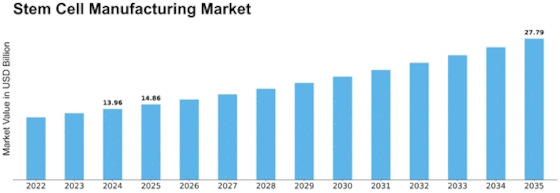

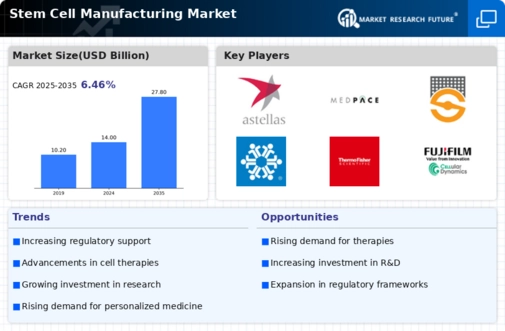
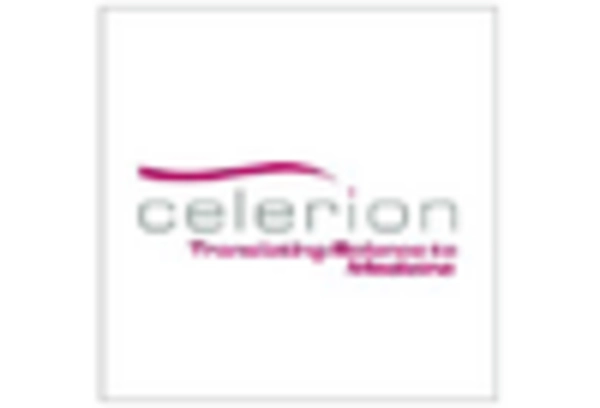
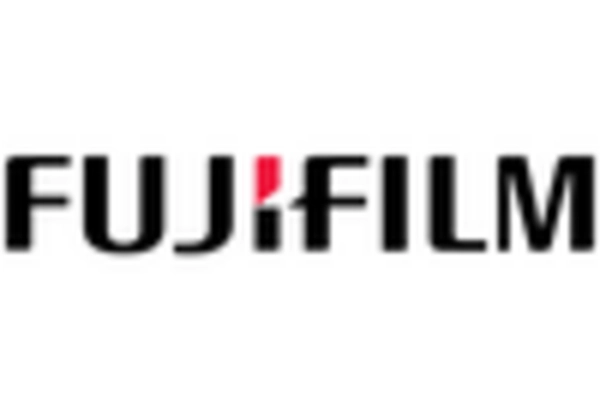
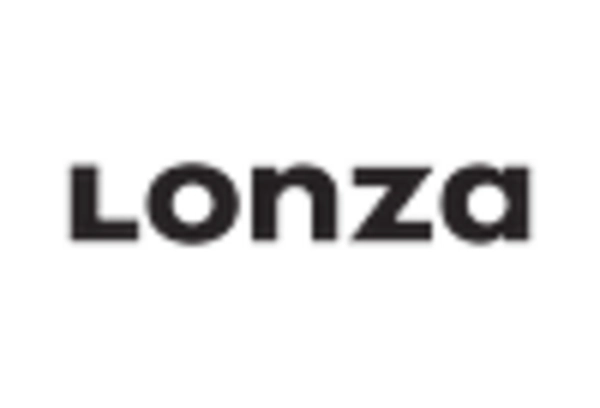

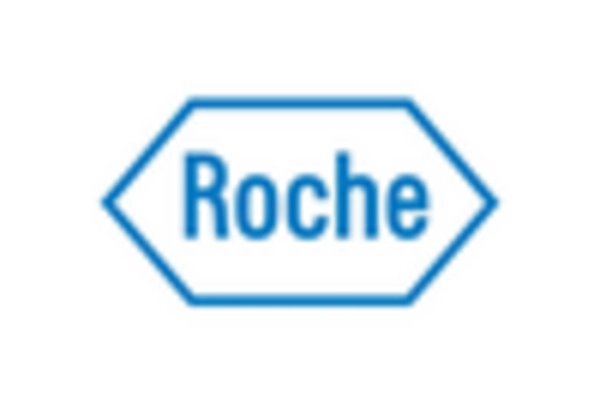










Leave a Comment